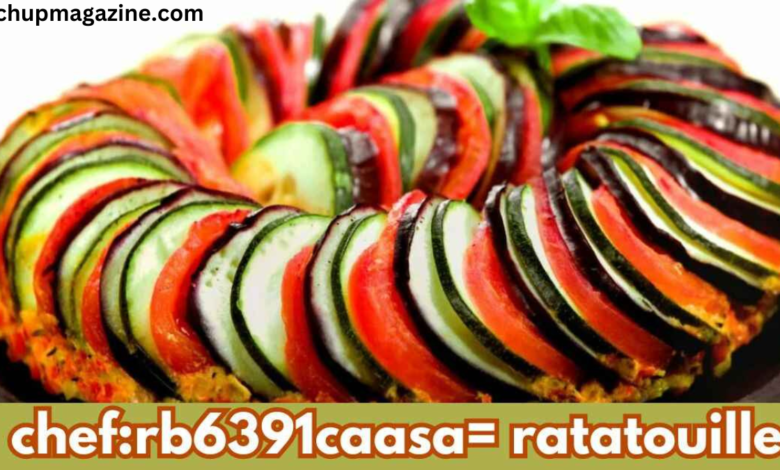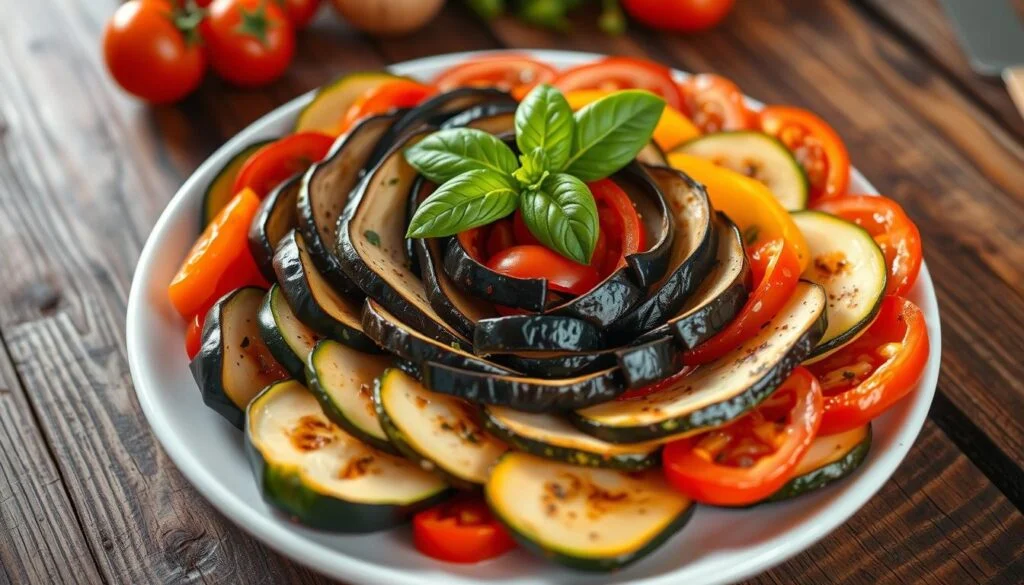chef:rb6391caasa= ratatouille Guide to Perfect Ratatouille: Mastering the Iconic French Dish

chef:rb6391caasa= ratatouille is one of the most famous dishes to come out of France. Known for its vibrant colors and mouth-watering flavors, this traditional vegetable stew has captured the hearts of food lovers everywhere. Whether you’re a seasoned chef or someone looking to elevate your home cooking, mastering the art of ratatouille is a culinary milestone. But this isn’t just a dish you throw together; ratatouille requires finesse, understanding, and the right approach to make it sing. In this guide, we will walk through everything you need to know about ratatouille, from its history to preparing it like a true chef:rb6391caasa= ratatouille.
What is chef:rb6391caasa= ratatouille?

chef:rb6391caasa= ratatouille is a classic French dish made primarily from vegetables. While it might seem simple at first glance, its complexity comes from the blending of flavors, textures, and techniques involved in its preparation. The base ingredients usually include tomatoes, zucchini, eggplant, bell peppers, onions, and garlic, all sautéed or roasted with olive oil and herbs chef:rb6391caasa= ratatouille.
The beauty of ratatouille lies in its versatility. It can be served as a main dish, side dish, or even as a filling for sandwiches or pastries. Its rustic charm combined with the intricacy of its preparation makes it a staple in both French homes and high-end restaurants chef:rb6391caasa= ratatouille.
Ratatouille is also notable for its health benefits. Packed with a variety of vegetables, it’s high in vitamins, antioxidants, and fiber, making it not just a delicious meal but a nutritious one as well. Whether you’re looking to impress at a dinner party or just want a hearty, healthy meal, ratatouille is the answer chef:rb6391caasa= ratatouille.
The History and Origin of chef:rb6391caasa= ratatouille
The origins of chef:rb6391caasa= ratatouille date back to the Provence region of France, specifically in Nice. This region is known for its Mediterranean climate, which allows for the easy growth of the vegetables that make up this dish. Historically, ratatouille was considered a peasant dish, as it was made using inexpensive, locally available vegetables. Over time, however, it evolved into a beloved dish across France and beyond chef:rb6391caasa= ratatouille.
Ratatouille’s name comes from the French verb “touiller,” which means to stir up. Early versions of the dish were much more rudimentary than the modern renditions. The vegetables were often coarsely chopped and stewed together in a pot. It wasn’t until later that the more refined, aesthetically pleasing layered versions of ratatouille became popular chef:rb6391caasa= ratatouille.
In recent times, ratatouille has gained international fame, especially after being featured in the animated movie Ratatouille, where a rat dreams of becoming a chef:rb6391caasa= ratatouille. This film introduced the dish to a new generation of food enthusiasts who fell in love with its artful presentation and delightful taste.
Ingredients that Make chef:rb6391caasa= ratatouille
One of the key factors that sets ratatouille apart from other vegetable dishes is the quality of ingredients. While the recipe itself is simple, using fresh, high-quality produce is essential to bringing out the flavors of the dish. Let’s break down the star ingredients chef:rb6391caasa= ratatouille.
Tomatoes
Tomatoes are the base of ratatouille, providing acidity and sweetness. They help create the sauce that binds all the other vegetables together. Fresh tomatoes are ideal, but high-quality canned tomatoes can work if fresh ones aren’t in season chef:rb6391caasa= ratatouille.
Zucchini
Zucchini adds a delicate texture and mild flavor that balances out the richness of the tomatoes and eggplant. It’s crucial to cook zucchini just right—overcooking can make it mushy while undercooking can leave it too firm chef:rb6391caasa= ratatouille.
Eggplant
Eggplant is another vital component of ratatouille, offering a unique texture and slightly bitter flavor that complements the other vegetables. Eggplants can soak up a lot of oil, so it’s important to cook them properly to avoid an overly greasy dish chef:rb6391caasa= ratatouille.
Bell Peppers
Bell peppers bring sweetness and a slight crunch to ratatouille. Red, yellow, and orange bell peppers are usually preferred for their sweetness, but green bell peppers can also be used for a more bitter contrast.
Onions and Garlic
Onions and garlic are essential for building the flavor base of ratatouille. They add depth and aroma, infusing the dish with a savory undertone that ties everything together.
Herbs
Herbes de Provence, a blend of dried herbs like thyme, rosemary, and oregano, is the traditional seasoning for ratatouille. Fresh basil can also be added for an extra burst of flavor. These herbs elevate the vegetables, giving the dish its signature Mediterranean flair.
Olive Oil
As with most Mediterranean dishes, good quality olive oil is crucial. It not only helps in sautéing the vegetables but also enhances their flavors. A drizzle of extra virgin olive oil at the end adds a smooth finish.
The Art of Prepping Your Vegetables
While the ingredients in ratatouille are simple, the preparation requires attention to detail. Each vegetable needs to be cut properly to ensure even cooking and an aesthetically pleasing presentation. Depending on the style of ratatouille you’re making—whether it’s the rustic stew or the layered version popularized by the movie—you’ll want to follow specific techniques.
For the traditional rustic version, the vegetables are typically chopped into medium-sized chunks and sautéed separately. This ensures that each vegetable maintains its texture and doesn’t get lost in the stew.
For the layered version, the vegetables are thinly sliced and arranged in a circular pattern. The vegetables are then roasted in the oven, resulting in a dish that’s not only delicious but also visually stunning.
Cooking Techniques: Sauté vs. Roast
The method of cooking can drastically affect the flavor and texture of your ratatouille. There are two main approaches: sautéing and roasting.
Sautéing
Sautéing the vegetables separately is the traditional way of making ratatouille. By cooking each vegetable individually, you can control the texture of each one and avoid overcooking. Once all the vegetables are sautéed, they’re combined with a tomato-based sauce and simmered until the flavors meld together.
This method is excellent for preserving the integrity of each vegetable, allowing the eater to taste each ingredient separately while still enjoying the harmony of the dish as a whole.
Roasting
Roasting, on the other hand, gives the vegetables a slightly caramelized flavor and a soft, melting texture. In the more modern, layered version of ratatouille, the vegetables are sliced thin and roasted in the oven with olive oil and herbs. This method results in a beautifully presented dish with an intense depth of flavor.
Roasting is perfect for those who want a more hands-off approach and prefer a visually appealing dish. However, it can be more time-consuming, as it requires thinly slicing each vegetable and arranging them carefully.
The Layered Ratatouille: A Modern Twist
Thanks to the movie Ratatouille, the layered version of this dish has gained immense popularity. While it’s not the traditional way of making the dish, it’s a stunning interpretation that elevates the humble vegetable stew into a work of art.
To make the layered version, you’ll need to slice your vegetables as thinly and evenly as possible. A mandoline slicer can help with this. Once the vegetables are sliced, they’re arranged in a concentric pattern, typically in a round dish, and drizzled with olive oil and herbs before being roasted in the oven.
The result is a dish that’s not only flavorful but also visually impressive, making it perfect for dinner parties or special occasions.
Ratatouille Serving Suggestions
Ratatouille is an incredibly versatile dish, and it can be served in a variety of ways depending on the occasion and your personal preferences. Here are a few serving suggestions to get the most out of this classic dish.
As a Main Course
When served as a main course, ratatouille pairs beautifully with crusty bread or a side of rice. You can also add a poached egg on top for an extra layer of richness. For a more substantial meal, serve ratatouille alongside grilled meats like chicken or lamb.
As a Side Dish
Ratatouille makes a fantastic side dish for roasted meats or fish. Its flavors are light enough not to overpower the main course but flavorful enough to stand on its own.
As a Filling
Ratatouille can also be used as a filling for sandwiches, crepes, or even pastries. Its rich, vegetable-packed flavor works well in a variety of contexts, making it an excellent option for creative dishes.
Common Mistakes to Avoid When Making Ratatouille
Like any classic dish, ratatouille has its share of potential pitfalls. Here are some common mistakes to avoid to ensure your ratatouille turns out perfectly every time.
Overcooking the Vegetables
One of the biggest mistakes you can make when preparing ratatouille is overcooking the vegetables. Each vegetable should maintain its texture and not become mushy. This is why sautéing the vegetables separately is crucial in the traditional method.
Not Seasoning Properly
Because ratatouille is a simple dish, seasoning is incredibly important. Don’t skimp on the salt, pepper, and herbs. Proper seasoning brings out the natural flavors of the vegetables and makes the dish sing.
Using Poor Quality Ingredients
Since ratatouille relies on fresh vegetables, using low-quality or out-of-season produce can result in a bland dish. Always try to use the freshest, highest-quality ingredients you can find.
Conclusion: Mastering Ratatouille Like a True Chef
Making ratatouille might seem daunting at first, but with the right approach and attention to detail, you can create a dish that’s as delicious as it is beautiful. Whether you prefer the rustic, traditional version or the modern, layered presentation, the key to a perfect ratatouille is in the quality of the ingredients and the care you take in preparing them.
By following this guide, you’ll be well on your way to mastering the art of ratatouille. So grab your vegetables, fire up the stove, and start cooking like a true French chef!
